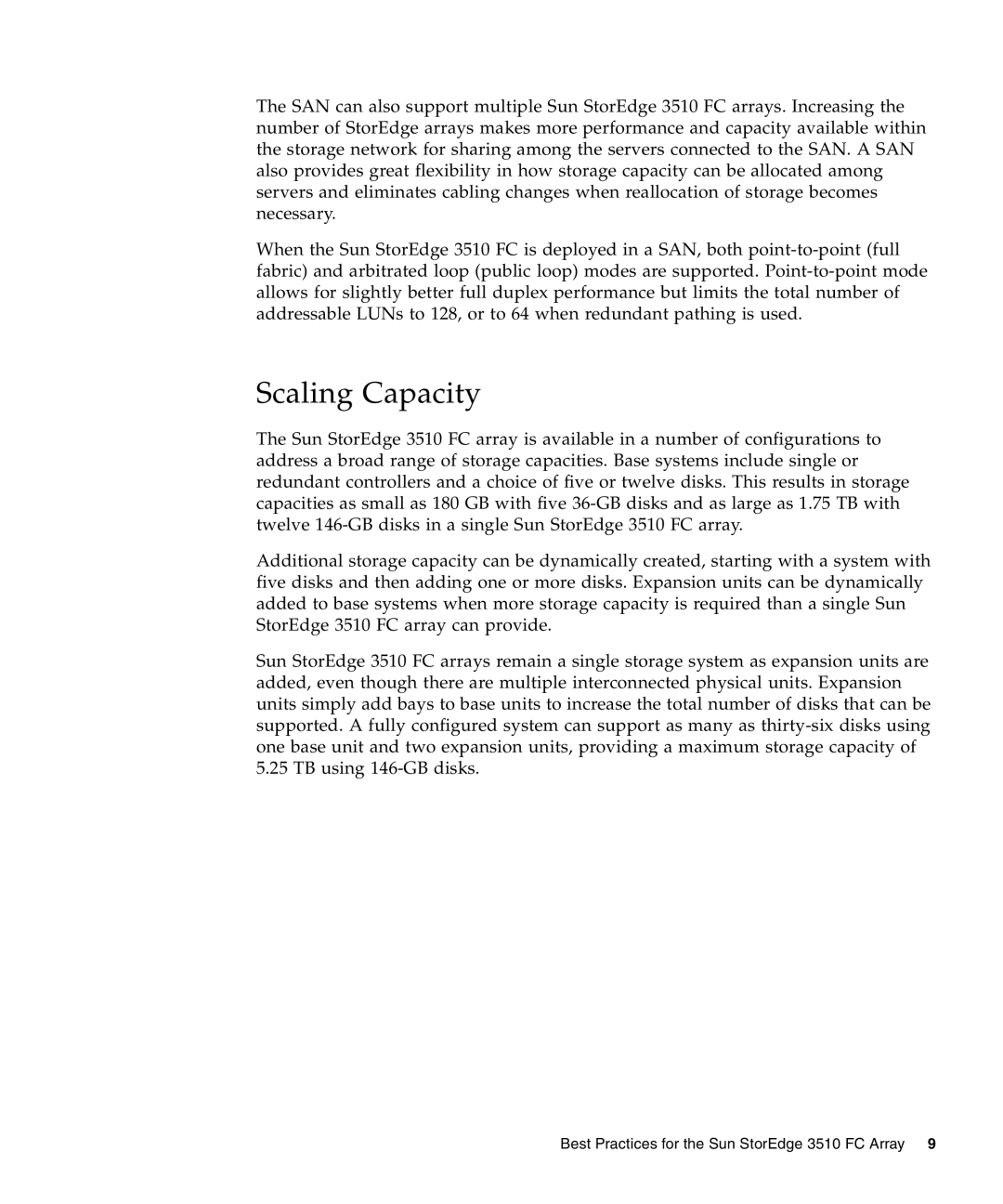The SAN can also support multiple Sun StorEdge 3510 FC arrays. Increasing the number of StorEdge arrays makes more performance and capacity available within the storage network for sharing among the servers connected to the SAN. A SAN also provides great flexibility in how storage capacity can be allocated among servers and eliminates cabling changes when reallocation of storage becomes necessary.
When the Sun StorEdge 3510 FC is deployed in a SAN, both
Scaling Capacity
The Sun StorEdge 3510 FC array is available in a number of configurations to address a broad range of storage capacities. Base systems include single or redundant controllers and a choice of five or twelve disks. This results in storage capacities as small as 180 GB with five
Additional storage capacity can be dynamically created, starting with a system with five disks and then adding one or more disks. Expansion units can be dynamically added to base systems when more storage capacity is required than a single Sun StorEdge 3510 FC array can provide.
Sun StorEdge 3510 FC arrays remain a single storage system as expansion units are added, even though there are multiple interconnected physical units. Expansion units simply add bays to base units to increase the total number of disks that can be supported. A fully configured system can support as many as
Best Practices for the Sun StorEdge 3510 FC Array 9
